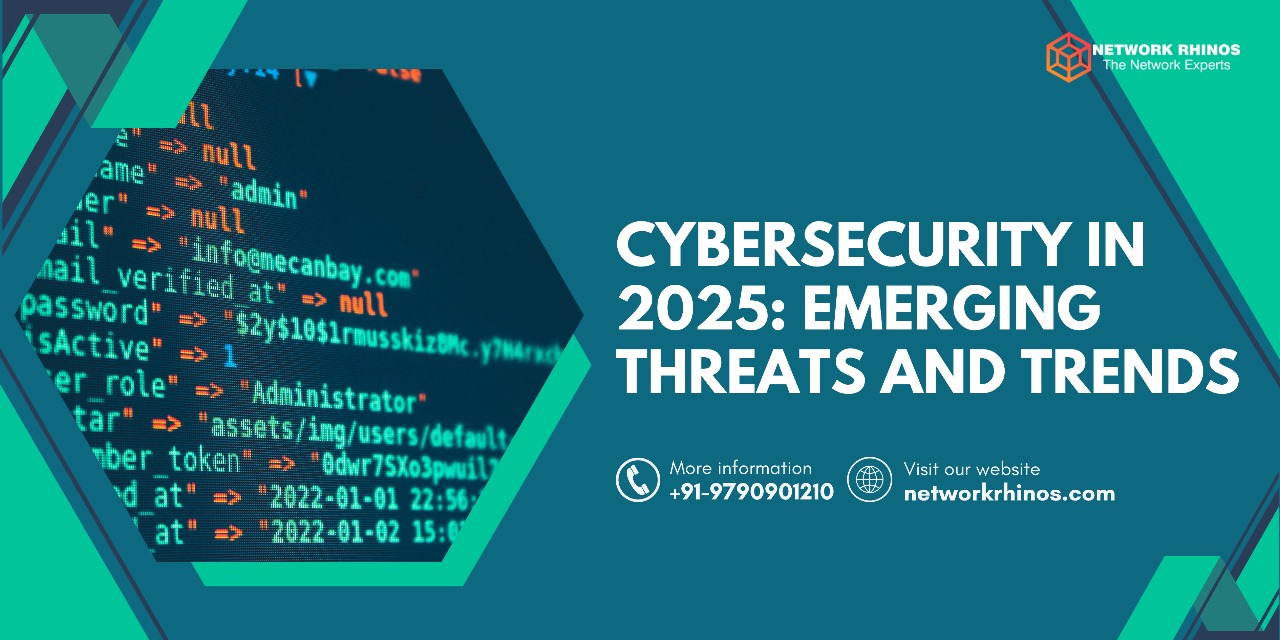Cybersecurity in 2025: Emerging Threats and Trends
Introduction
Cybersecurity is the practice of protecting computers, networks, and data from unauthorized access or attacks. In 2025, as technology advances, so do the methods used by cybercriminals. Understanding these emerging threats and trends is crucial for everyone, including students, to stay safe online.
1. Artificial Intelligence (AI) in Cyber Attacks
AI is a powerful tool that can be used for good, like improving healthcare or transportation. However, cybercriminals are also using AI to create more sophisticated attacks.
- AI-Powered Phishing: Attackers use AI to craft personalized emails that trick people into revealing sensitive information.
- Deepfakes: These are fake videos or audio recordings that look and sound real. Cybercriminals use them to impersonate others and deceive victims.
- Adaptive Malware: Malware that changes its behavior to avoid detection by security systems.
2. Ransomware-as-a-Service (RaaS)
Ransomware is a type of malware that locks your data and demands payment to unlock it. RaaS is a business model where cybercriminals sell or rent ransomware tools to others.
- Easy Access: Even individuals with little technical knowledge can launch attacks using RaaS.
- Increased Threat: The availability of RaaS has led to a rise in ransomware attacks globally.
3. Quantum Computing and Cybersecurity
Quantum computers are powerful machines that can solve complex problems faster than traditional computers. While they have many benefits, they also pose risks to cybersecurity.
- Breaking Encryption: Quantum computers could potentially break current encryption methods, making sensitive data vulnerable.
- Post-Quantum Cryptography: Researchers are developing new encryption techniques to protect data against quantum threats.
4. Internet of Things (IoT) Vulnerabilities
IoT devices include smart home gadgets, wearable technology, and connected appliances. While convenient, they can be vulnerable to cyber attacks.
- Expanded Attack Surface: More devices mean more entry points for attackers.
- Lack of Security: Many IoT devices lack robust security features, making them easy targets.
5. Zero Trust Architecture
The traditional security model assumes that everything inside a network is trustworthy. Zero Trust Architecture changes this approach.
- Never Trust, Always Verify: Every user and device must be verified before accessing resources.
- Enhanced Security: This model reduces the risk of internal and external threats.
6. Supply Chain Attacks
Cybercriminals target less secure elements in a supply chain to access larger networks.
- Third-Party Risks: Vendors or partners with weak security can be exploited to breach more secure systems.
- Notable Incidents: High-profile attacks have highlighted the need for better supply chain security.
7. Cybersecurity Training Trends
Effective cybersecurity training is essential to prepare individuals and organizations against threats.
- Interactive Simulations: Hands-on exercises that mimic real cyber attacks help trainees respond effectively.
- Gamification: Using game elements to make learning about cybersecurity engaging and memorable.
- Immersive Learning: Role-playing scenarios where participants act out responses to cyber incidents.
8. Cybersecurity Awareness
Being aware of cybersecurity threats and best practices is vital.
- Education: Learning about common threats like phishing, malware, and social engineering.
- Best Practices: Using strong passwords, updating software regularly, and being cautious with emails and links.
- Community Engagement: Participating in cybersecurity awareness programs and sharing knowledge with peers.
9. Role of Organizations like Network Rhinos
Organizations such as Network Rhinos play a significant role in promoting cybersecurity awareness and training.
- Educational Programs: Offering courses and certifications to equip individuals with cybersecurity skills.
- Community Outreach: Engaging with schools and communities to spread awareness about online safety.
Conclusion
Cybersecurity in 2025 presents both challenges and opportunities. As technology evolves, so do the tactics of cybercriminals. Staying informed about emerging threats and adopting best practices are essential steps in protecting ourselves and our communities. Through continuous learning and awareness, we can build a safer digital world for everyone.

